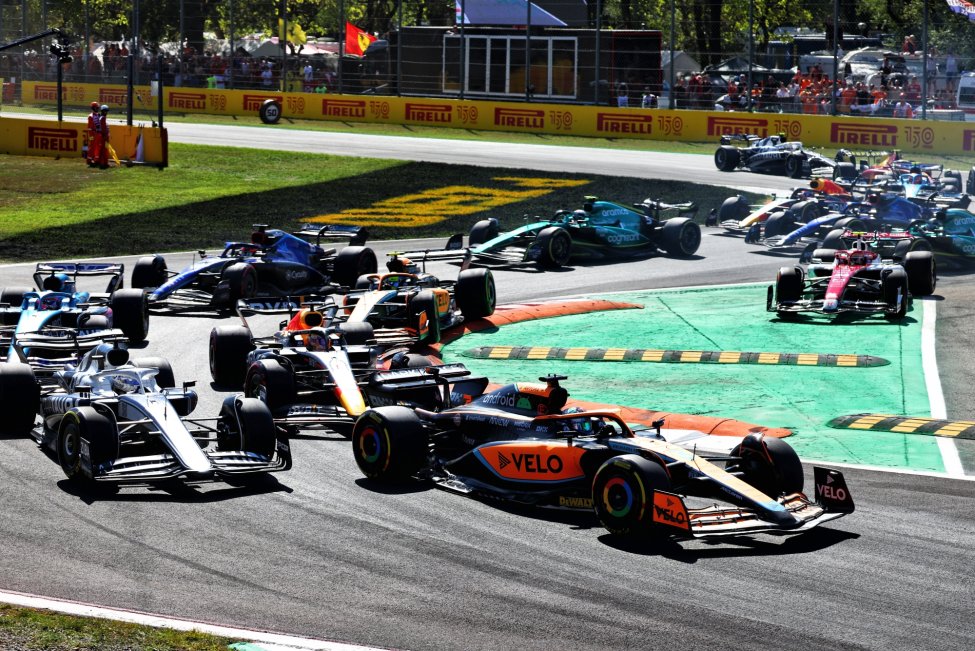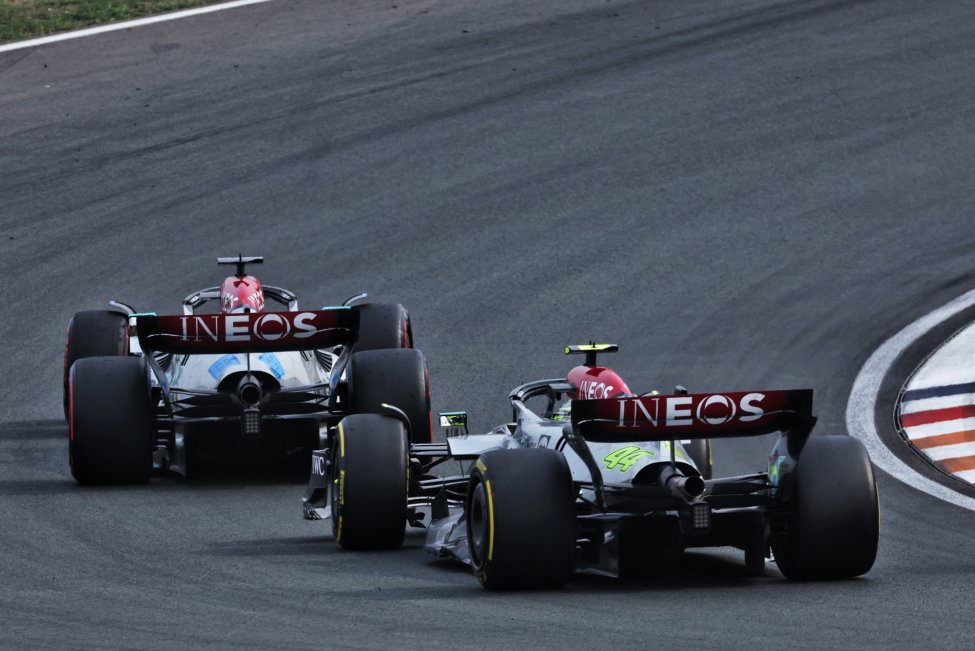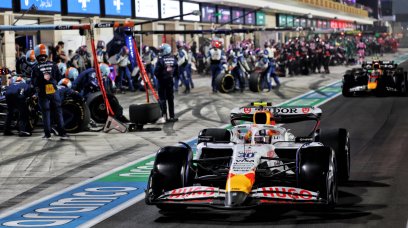For the first time ever, Formula 1 is set to have a 24 race season, as the calendar expands for 2023.
Qatar rejoins at Losail having fallen off in 2022 to prepare for the FIFA World Cup in November/December, while the Las Vegas Grand Prix is set for 18th November in what will be F1's first Saturday race since the 1985 South African Grand Prix.
France is gone while China also comes back in, although this is still far from certain as a first visit to Shanghai since 2019 depends on COVID laws in the country next spring.
Some minor shuffling about - such as the Spanish Grand Prix being in June and the Belgian Grand Prix taking place as the race before the summer break, not after it, has also taken place as 24 Grands Prix in 21 countries between March 5th and November 26th are what await the field.
That's not even considering the six sprint races set to be on the calendar next season as well.
The continued push for more races by F1 is straight-forward enough - more races equal more money in the overall pie, and with tracks around the world eager to join in the boom, F1 is not going to go bust anytime soon.
But the people involved might. The mechanics, the media, the organisers will all face an unprecedented schedule in 2023.
They'll all get it done, because that's what they do, but the risk of burnout and fatigue setting in is a real danger as the toll on personal lives becomes ever greater and the rewards being overtaken by apathy.
However, some structural changes to the calendar could make it a manageable workload for those involved as well as keeping everyone fresh.
Changes that could be made to calendar
The ground rules are as follows:
- The season must fit into the dates of the actual 2023 calendar
- The races featured must be actual ones planned for the new season
- No more than three races in a calendar month
This is not a 'fantasy F1 calendar' wishlist, so let's get to it.
First up, triple-headers were a tool used in 2020 to ensure as many races as possible could be run in the COVID season as F1 and the FIA were unsure about what might happen next.
Teams were unreceptive to the model when it was first used in 2018 in France-Austria-Great Britain but this was a necessity thanks to the 2018 World Cup final being on July 15th, with the Silverstone race moved forward to the 8th.
But as the calendar expands, it seems triple-headers are here to stay so let's make what we can from them - which goes hand-in-hand with the second part of the solution - grouping races together.
It has been something of discussion in the past by F1 to potentially group races together by region - such as North America, Middle-East, Far-East/Australia in a similar way to how the European leg is set in stone in the summer months.
There's little sense in going from races in China (April 16th) and Azerbaijan (30th) to Miami on May 7th (another uber-long back-to-back) just to then come back to Europe for the Emilia Romagna GP on May 21st.
A little bit of tightening up in the calendar would go a long way.
RacingNews365's version of 2023 F1 calendar
| Race | Actual date | Proposed date | |
|---|---|---|---|
| Australia | April 2nd | March 5th | |
| China | April 16th | March 12th | |
| BREAK | |||
| Bahrain | March 5th | March 26th | |
| Saudi Arabia | March 12th | April 2nd | |
| Azerbaijan | April 30th | April 9th | |
| BREAK | |||
| Miami | May 7th | April 30th | |
| Canada | June 18th | May 7th | |
| BREAK | |||
| Emilia Romagna | May 21st | May 21st | |
| Monaco | May 28th | May 28th | |
| Spain | June 4th | June 4th | |
| BREAK | |||
| Austria | July 2nd | June 25th | |
| Belgium | July 30th | July 2nd | |
| Great Britain | July 9th | July 9th | |
| SUMMER BREAK | |||
| Hungary | July 23rd | August 20th | |
| Netherlands | August 27th | August 27th | |
| Italy | September 3rd | September 3rd | |
| BREAK | |||
| Singapore | September 17th | September 17th | |
| Japan | September 24th | September 24th | |
| BREAK | |||
| Mexico | October 29th | October 8th | |
| Sao Paulo | November 5th | October 15th | |
| BREAK | |||
| United States | October 22nd | October 29th | |
| Las Vegas | November 18th | November 4th | |
| BREAK | |||
| Qatar | October 8th | November 19th | |
| Abu Dhabi | November 26th | November 26th |
Tightening up the calendar
As the table above shows, there would be four triple-headers and six double-headers, although they are all grouped by region so there is not such extreme travel cases such as the Azerbaijan-Miami or Las Vegas-Abu Dhabi ones released by the FIA.
It would mean that teams could rotate their travelling parties around so one group takes the Australia/China opening leg before another comes in for the Bahrain/Saudi/Azerbaijan series of races.
Seeing as F1 mechanics are usually the first to arrive and last to leave on a Grand Prix weekend, some thought into their travel conditions would no doubt be greatly appreciated.
The Le Mans 24 Hours, which celebrates its centenary in 2023 is set for June 11-12th next year, with F1 finding space for a week off for that slot - which is maintained in our hypothetical calendar.
In addition, the Spa 24 Hours is set for July 30th, meaning it will be moved to accommodate the Grand Prix in real life after a date change.
By bringing the Belgian GP forward to July 2nd, and putting it after the Austrian GP and before the British one, a sensible journey home through Europe with a stop in the Ardennes is possible before an extended summer break lasting between July 9th and August 20th.
The Americas
The Singapore and Japanese Grands Prix remain in situ on September 17th/24th, before the final Americas leg of the campaign begin in Mexico on October 8th.
It runs back-to-back with the Sao Paolo Grand Prix in our hypothetical world, before a two-week break ahead of a double-header in the United States.
The Austin race runs on October 29th, with the trip to Las Vegas brought forward two weeks to November 4th.
Due to the unique time in Las Vegas, it will start at 10:00pm Pacific Time, which is 6am in Europe, but 1am on the East Coast of America.
It is not an ideal situation for F1 or Vegas, but its insistence on having a race there means a Saturday night slot is the best of what is possible.
Handily, by running on the Saturday night, it means there will not be a clash with the Championship race in the NASCAR Cup Series - set for November 5th in Nevada's next door state of Arizona and the city of Phoenix.
The season then ends with a Qatar/Abu Dhabi double-header - and does not run into December as some recent seasons have done so.
Also interesting:
F1 Podcast: Does F1's grid penalty system need revising?
With confusion reigning for several hours over Max Verstappen's starting position for the Italian Grand Prix, does F1's grid penalty system need revising, and should there be a rule preventing races from ending under the Safety Car?
RacingNews365.com F1 journalists Dieter Rencken and Michael Butterworth discuss the key issues from the Italian Grand Prix.
Don't miss out on any of the Formula 1 action thanks to this handy 2026 F1 calendar that can be easily loaded into your smartphone or PC.
Download the calenderMost read
In this article




























Join the conversation!